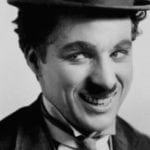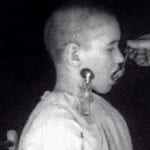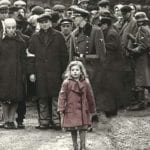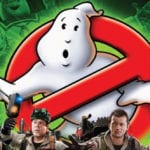 Music
Music  Music
Music  History
History 10 Less Than Jolly Events That Occurred on December 25
 Weird Stuff
Weird Stuff 10 Funny Ways That Researchers Overthink Christmas
 Politics
Politics 10 Political Scandals That Sent Crowds Into the Streets
 Weird Stuff
Weird Stuff Ten Bizarre Facts About The Doge Meme
 Our World
Our World 10 Ways Your Christmas Tree Is More Lit Than You Think
 Movies and TV
Movies and TV The 10 Coolest Stars to Set Sail on The Love Boat
 History
History 10 Things You Didn’t Know About the American National Anthem
 Technology
Technology Top 10 Everyday Tech Buzzwords That Hide a Darker Past
 Humans
Humans 10 Everyday Human Behaviors That Are Actually Survival Instincts
 Music
Music 10 Surprising Origin Stories of Your Favorite Holiday Songs
 History
History 10 Less Than Jolly Events That Occurred on December 25
 Weird Stuff
Weird Stuff 10 Funny Ways That Researchers Overthink Christmas
Who's Behind Listverse?

Jamie Frater
Head Editor
Jamie founded Listverse due to an insatiable desire to share fascinating, obscure, and bizarre facts. He has been a guest speaker on numerous national radio and television stations and is a five time published author.
More About Us Politics
Politics 10 Political Scandals That Sent Crowds Into the Streets
 Weird Stuff
Weird Stuff Ten Bizarre Facts About The Doge Meme
 Our World
Our World 10 Ways Your Christmas Tree Is More Lit Than You Think
 Movies and TV
Movies and TV The 10 Coolest Stars to Set Sail on The Love Boat
 History
History 10 Things You Didn’t Know About the American National Anthem
 Technology
Technology Top 10 Everyday Tech Buzzwords That Hide a Darker Past
 Humans
Humans 10 Everyday Human Behaviors That Are Actually Survival Instincts
10 Monumental Milestones In Movie History
There are some movie milestones—first animated feature, first science fiction film, first on-screen death—that are so well known that they will be forever talked about in the realms of movie history. But other cinematic firsts tend to go unnoticed even though they’re also extremely important and deserve just as much attention.
10Robocop 2 (1990)
First Feature-Length Film To Use Real-Time Computer Graphics
Robocop 2 doesn’t have a lot of fans compared to its undisputed classic of a predecessor, but it does have the distinction of officially ushering in the CGI generation.
Real time computer graphics—also known as digital puppetry—require a human adding motion to a 3-D virtual image. This is done via simple keyed-in orders such as “look left,” “blink,” and “open mouth wide,” the results of which make a series of bits and bytes positively lifelike.
The process was used for the first time in a feature film with Robocop 2. Cain, the villain of the film, was once a human, but an accident transferred his consciousness into a giant robot body. This made his character the perfect candidate for the filmmakers’ experimental technique. Every one of Cain’s facial expressions, including his shutdown/death, was the result of people behind a keyboard typing in orders that a 3-D program followed without question or error.
Today, digital puppetry is used for motion capture, meaning just about every special effects–heavy blockbuster of the past 25 years—from Lord of the Rings to Avatar and so many more—owes a debt of gratitude to the otherwise-forgettable Robocop 2.
9Memoirs Of A Geisha (2005)
First All-Asian Hollywood Cast
Hollywood has an unfortunate tendency to cast white people in roles meant for just about every race except for their own. It’s not just a shameful relic of our past either—Even today, you have Johnny Depp pretending to be a Native American in The Lone Ranger and looking both terrible and ridiculous because of it.
That was what made 2005’s Memoirs of a Geisha such a relief, not to mention a cinematic milestone. For the first time ever, a Hollywood production featured all Asians and not a single white person in sight. While an incredible achievement, it’s still a blemish on Hollywood that it took them over 100 years to get to this point.
However, if you ask certain Asians—mainly the Japanese—they’ll let you know more work needs to be done. While Memoirs of a Geisha centered around the old Japanese way of life (the geisha is an iconic Japanese figure), several of the film’s lead actresses were actually Chinese. Clearly, Hollywood acknowledging Asians is a great start toward correcting their habit of blindly whitewashing everything, but the all-important next step is to educate them on which nationality is which.
8O Brother, Where Art Thou? (2000)
First Live-Action Movie To Fully Use Digital Color Correction
You can find a digital color correction tool included in just about every piece of movie editing software today. The power to change the color of a picture or film digitally to create a specific tone is a big reason why so many fan-made films look like they were done by a professional these days.
This incredible bit of technology is responsible for the beauty and polish behind just about every film of the past 15 years. And it all started with O Brother, Where Art Thou?, a film set in the Depression era and deliberately designed to look as old-fashioned as possible.
Before Brother, filmmakers relied on chemically bathing their films in a lab to add color. But with computers becoming ubiquitous around 2000, the Coen brothers decided to try something different. After filming Brother in a bright green summertime atmosphere, the Coens sent the film to a California studio to have the color altered to a more nostalgic sepia tone. In other words, technology of the future was first used to create a postcard from the past.
7Ulysses (1967)
First Major Film To Use The F-Word
For a long while, you simply did not hear bad words in movies. Even mild curses like “heck” or “darn” rarely made the final cut. Then the late ’60s and all its rebellion and counterculture came to be, and bad words slowly started seeping into our cinemas.
In 1967, the ultimate taboo word—the F-bomb—finally made its cinematic debut in the British film Ulysses. The main reason for saying such naughty things were the movie’s monologues about sex. These were so controversial, New Zealand theaters actually separated men and women from one another.
Meanwhile, the Cannes Film Festival censored the movie’s subtitles without director David Strick’s consent. Enraged, he yelled and screamed his way to the projection booth and turned off the switches. He then got pushed down a flight of stairs, presumably swearing the whole way down.
Nowadays, bad words in the movies are just another bit of dialogue. The notoriety of Strick and his film are a major reason why.
6The Rescuers Down Under (1990)
First Fully Digital Feature Film
Despite it being the first name in digital animation, Pixar did not invent the format. That honor goes to The Rescuers Down Under, a little-known Disney film that served as a sequel to their 1977 hit, The Rescuers.
Before this film, cartoons were done the very old-fashioned way: a series of pictures with ever-so-slight differences, rapidly flipped so as to present the illusion of motion. With Down Under, though, every piece of paper was fed into a computer where the drawings were digitally painted. This sped up the animation process significantly and required less traditional (and costly) materials such as paint.
Much like Robocop 2, The Rescuers Down Under is more memorable for being the first movie to do something major than for actually being a good movie. For one reason or another, Down Under was a major financial flop. But since it helped change animation forever, we’re willing to bet Disney doesn’t care all that much that it didn’t become the next Pinocchio.
5Rashomon (1950)
First Direct Shot Of The Sun
This 1950 Japanese murder mystery actually boasts two major milestones. For one, Rashomon is the first film to ever directly film the Sun. For decades, filmmakers were nervous about the idea of doing so since nobody was exactly sure what would happen. The common fear was that the Sun’s rays would immediately burn the camera and destroy the film within.
Director Akira Kurosawa decided to test this theory and pointed his camera right at Sol. Nothing happened except for the capture of one of the most beautiful and iconic images in cinematic history. This helped filmmakers everywhere better understand how much lighting a camera can handle, which led to a wider range of techniques in cinematography.
In addition, Rashomon gave birth to an innovative storytelling technique creatively known as the “Rashomon Effect.” Designed to create mystery, the “Rashomon Effect” involves multiple characters telling contradictory interpretations of the same event. This technique has since been used by many critically acclaimed films such as Reservoir Dogs, Inside Man, and The Usual Suspects.
4Sunday Bloody Sunday (1971)
First Homosexual Kiss In A Mainstream Movie
For the longest time, homosexual kissing almost never happened in mainstream cinema. The closest Hollywood came was 1927’s Wings, where two soldiers shared a long goodbye kiss as one was about to die. But that wasn’t a kiss between homosexuals, and the surviving soldier actually goes on to marry a woman once he returns home.
For a true, unquestionably homosexual kiss, moviegoers had to wait until 1971’s Sunday Bloody Sunday. This film told the story of a man carrying on a romantic relationship with both a woman and another man. Once the two men kiss, it’s not treated in any way like a scandalous moment but rather a casual and tender moment shared by two people who love one another.
Gay characters are still surprisingly rare in film, and even rarer is a movie that portrays them in a normal light. Sunday Bloody Sunday gave us both instances, and it’s up to the rest of Hollywood to one day follow suit.
3The Yiddisher Boy (1909)
First Film To Feature A Flashback
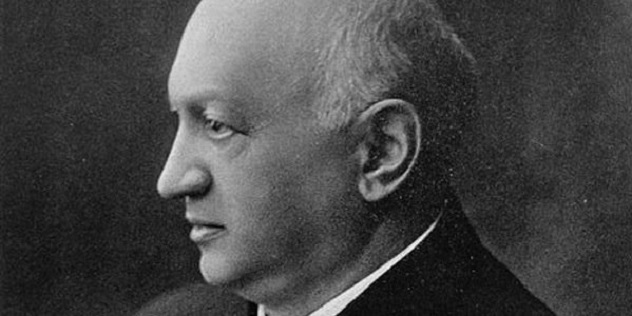
Revealing a character’s past and motivation via flashback is one of the most widely used and effective storytelling arcs out there. It’s so popular, in fact, that movies were still in their infancy when somebody came up with the idea.
In 1909, filmmaker Siegmund Lubin produced a three-minute silent film called The Yiddisher Boy. He packed a lot in those three minutes. A man named Moses is attacked by street thugs only to be saved by a man named Ed. Moses later donates his last bit of change to help save Ed’s life after he was hit by a bicycle. Years later, a broke and unemployed Ed comes to a now-successful Moses looking for a job. Moses recognizes him and hires him on the spot.
However, the film is less famous for its story than for its flashback. At some point during the film’s epic run time, Moses thinks back to a fight he got into 25 years ago. We’re not sure if this memory jog is what prompted Moses to help Ed after his bike accident because footage of this film is nearly impossible to come by. But an educated guess suggests that it did—when you only have 180 seconds to tell a multifaceted story, you have to make every part count.
2Sky Captain And The World Of Tomorrow (2004)
First Film Shot Entirely With A Digital Background
Digital backgrounds (green and blue screens) have been around for decades. They’re useful for transporting your character to all sorts of amazing locales without having to actually fly the actor there. But for decades, these screens had exclusively been used as an addendum to the real world the director was filming in. Never in the history of cinema had anybody thought to create an entire film in front of one.
Finally, in 2004, Sky Captain and the World of Tomorrow became the first movie in history to eschew physical locations in favor of start-to-finish green screen backgrounds. However, its story truly began 10 years earlier in 1994. Director Kerry Conran was looking to get his foot in the Hollywood door, and his fancy film degree wasn’t doing the trick. He spent four years of his life putting together a six-minute black-and-white trailer for a movie shot entirely in front of a digital background. His only other tool was a lone computer.
Once he found an interested party who agreed to help produce the film without a major distributor, Conran took his six minutes and turned it into a full-length feature. He spent an additional two years writing the screenplay and filming scenes using stand-in actors (Jude Law and Angelina Jolie came later). To help his actors figure out where to go and how to move without any scenery to guide them, Conran actually drew maps on the floor that would guide them from point to point in the script.
Sadly, for all of Conran’s hard work, Sky Captain bombed at the box office. However, his technique had already begun influencing his fellow filmmakers, and movies like Sin City and 300 were soon adopting it with far more success. But a mid-’90s digital trailer created by an outsider without any Hollywood connections was the seed that started it all.
1The Boxing Cats (1894)
First LOLcat Film
In the new millennium, it often seems like silly LOLcat videos are more popular than actual movies. If you’re one of those people who love to waste time by watching wacky cats doing wacky things, you have exactly one man to thank: Thomas Edison.
That’s right—one of the most famous inventors of all time also had a sense of humor and a weak spot for the cute and silly. In July of 1894, while experimenting with the new medium of film, Edison got the idea to stick boxing gloves on a couple of cats and let them duke it out. Unfortunately, the end of the fight was either undocumented or lost to history, so nobody knows for sure who won the knock-down, drag-out encounter.
Being the first-ever silly cat video (and possibly the first instance of filmed comedy in history), it was probably far funnier back then than it is now. But more importantly, Boxing Cats shows that from the start filmmakers weren’t satisfied with merely filming the mundane. They were already exploring the limitless bounds of the human imagination to create new worlds both silly and dramatic. And it all started with a couple of silly cats.
Check out Koytoys, Jon David Garcia’s Facebook page devoted to facts and trivia about sports and movies.

![Top 10 Most Important Nude Scenes In Movie History [Videos] Top 10 Most Important Nude Scenes In Movie History [Videos]](https://listverse.com/wp-content/uploads/2019/09/sharonstone-150x150.jpg)
